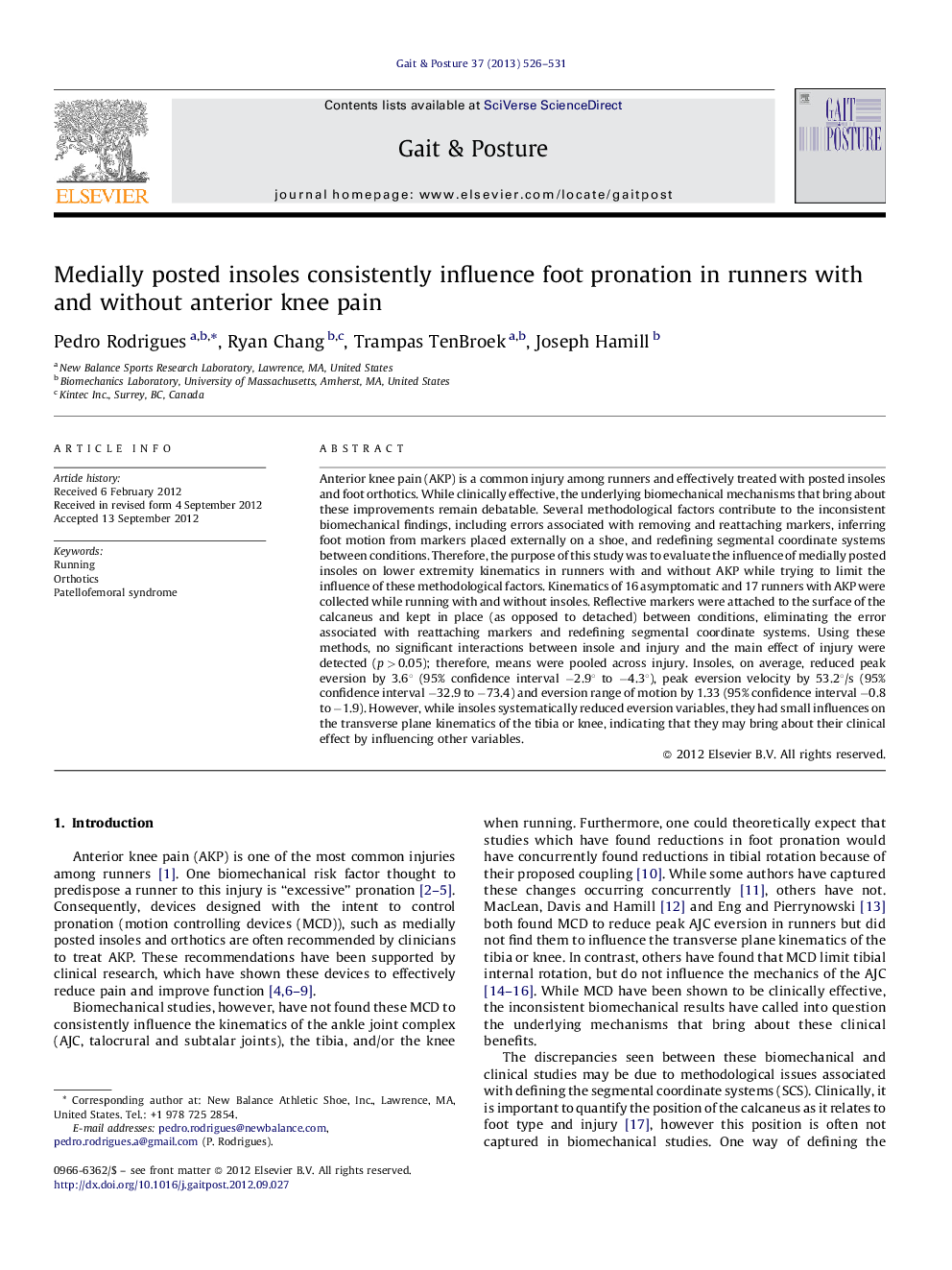| کد مقاله | کد نشریه | سال انتشار | مقاله انگلیسی | نسخه تمام متن |
|---|---|---|---|---|
| 6207248 | 1265657 | 2013 | 6 صفحه PDF | دانلود رایگان |
Anterior knee pain (AKP) is a common injury among runners and effectively treated with posted insoles and foot orthotics. While clinically effective, the underlying biomechanical mechanisms that bring about these improvements remain debatable. Several methodological factors contribute to the inconsistent biomechanical findings, including errors associated with removing and reattaching markers, inferring foot motion from markers placed externally on a shoe, and redefining segmental coordinate systems between conditions. Therefore, the purpose of this study was to evaluate the influence of medially posted insoles on lower extremity kinematics in runners with and without AKP while trying to limit the influence of these methodological factors. Kinematics of 16 asymptomatic and 17 runners with AKP were collected while running with and without insoles. Reflective markers were attached to the surface of the calcaneus and kept in place (as opposed to detached) between conditions, eliminating the error associated with reattaching markers and redefining segmental coordinate systems. Using these methods, no significant interactions between insole and injury and the main effect of injury were detected (p > 0.05); therefore, means were pooled across injury. Insoles, on average, reduced peak eversion by 3.6° (95% confidence interval â2.9° to â4.3°), peak eversion velocity by 53.2°/s (95% confidence interval â32.9 to â73.4) and eversion range of motion by 1.33 (95% confidence interval â0.8 to â1.9). However, while insoles systematically reduced eversion variables, they had small influences on the transverse plane kinematics of the tibia or knee, indicating that they may bring about their clinical effect by influencing other variables.
⺠Studies have not shown motion controlling devices to consistently affect lower extremity biomechanics. ⺠Several methodological factors may contribute to these inconsistencies. ⺠These factors include placing markers externally on a shoe and redefining segmental coordinate systems between conditions. ⺠When limiting the influence of these methodological factors medially posted insoles consistently reduce foot pronation variables.
Journal: Gait & Posture - Volume 37, Issue 4, April 2013, Pages 526-531
